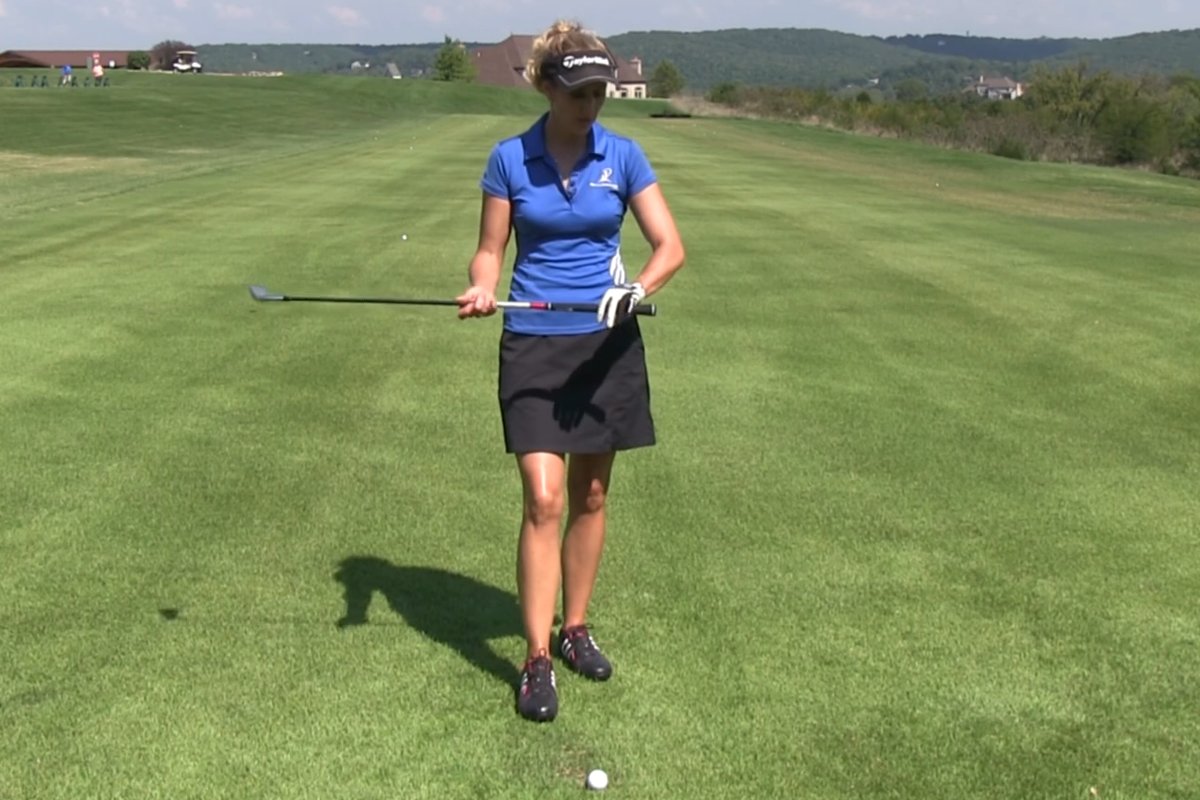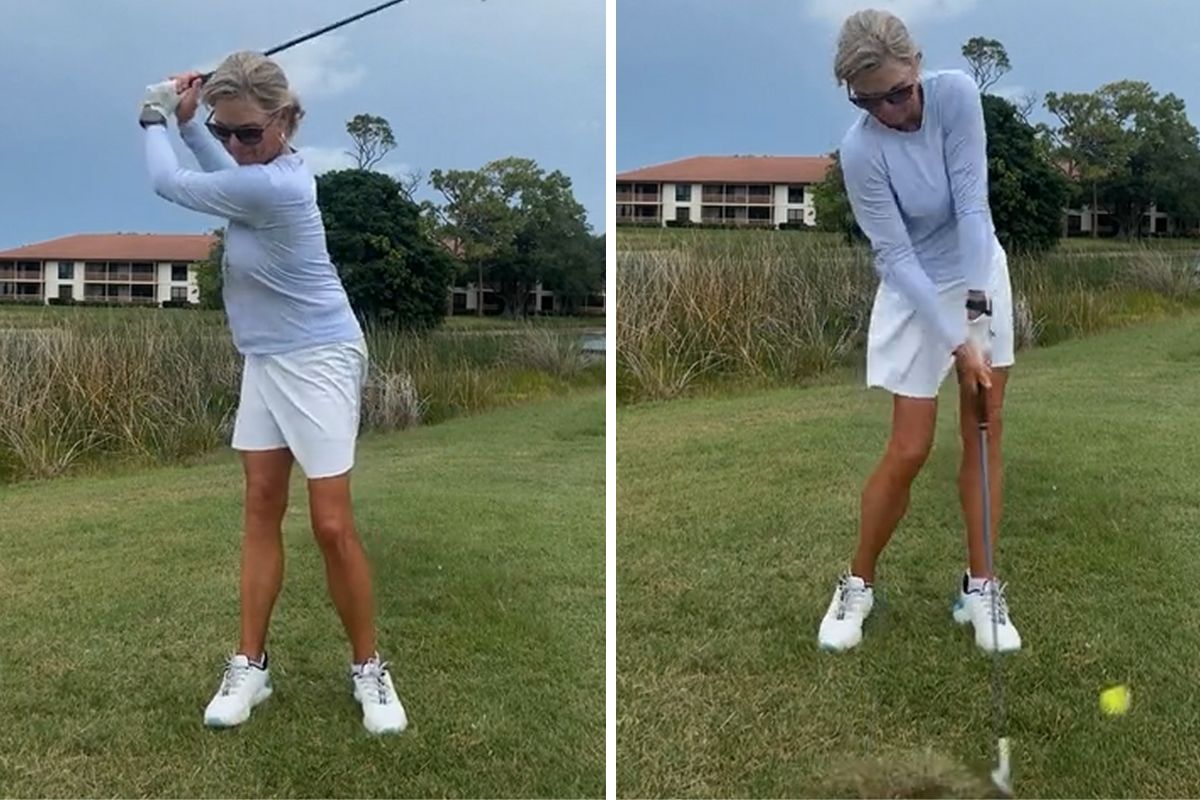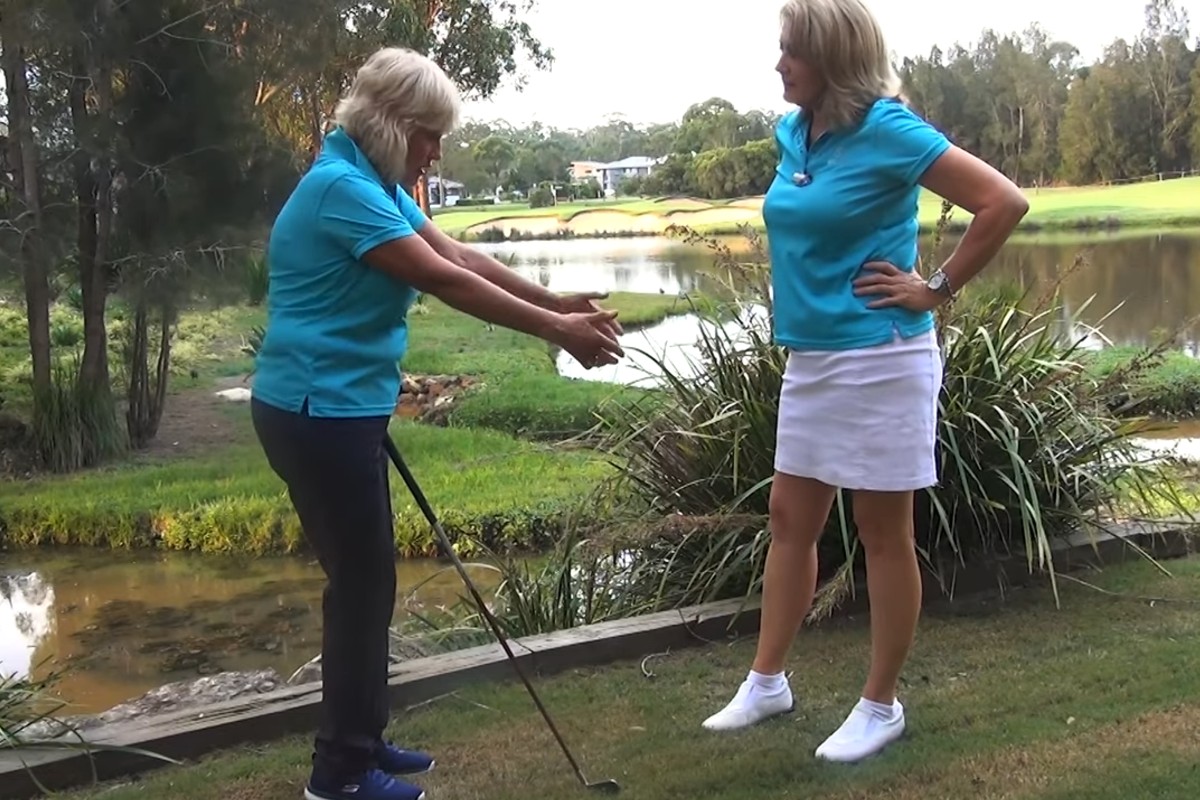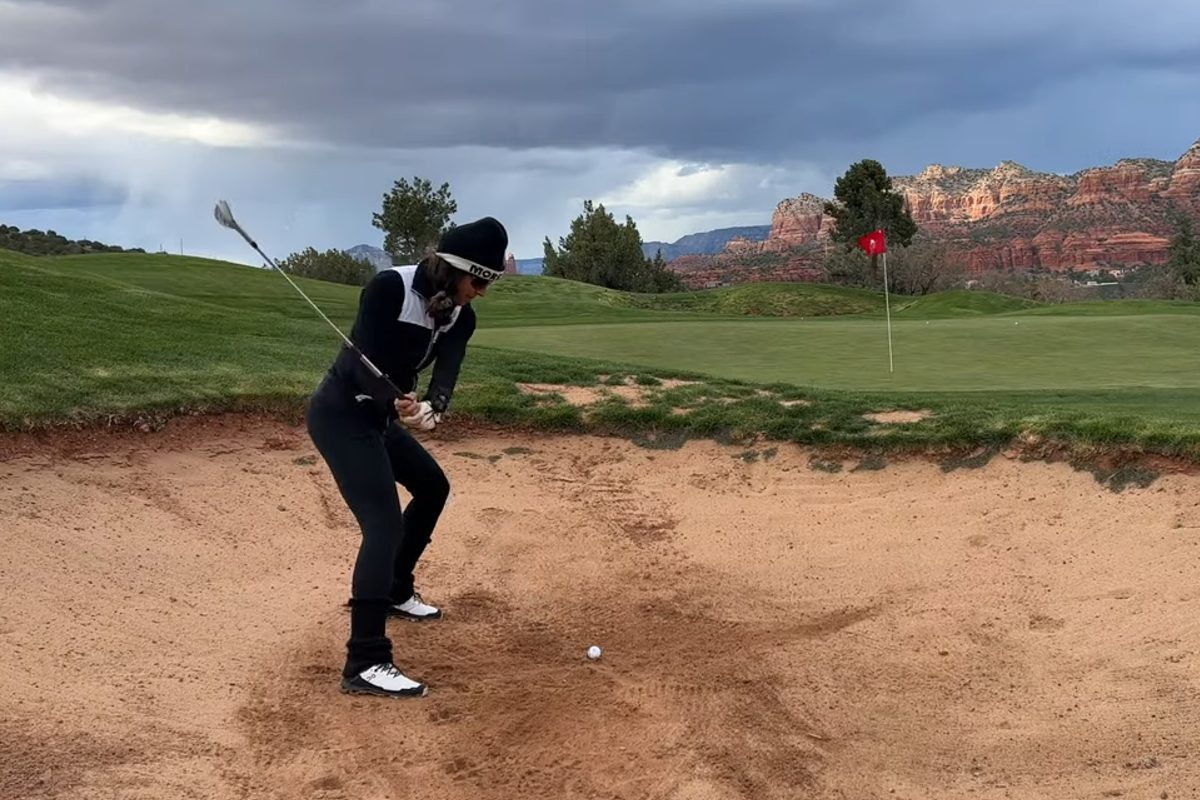It’s the last hole of the club championship. You have a 135 yard shot over water to the green. Your nerves are on edge because if you par you will probably win and a bogey will most likely put you in a playoff.
The problem is you are stuck between two clubs. Your wedge is your 130 club and your 9 in your 140 club. What do you do? It’s at times like this when the pressure is on and you’re nervous that you’ll find yourself stuck in this unfortunate situation.
All too often we get stuck practicing with the same clubs on the range and always from a perfect lie. Part of our practice sessions would be much better spent learning how to work the ball, how to knock it down, how to curve it, hit it higher, etc.. When we don’t put ourselves in sticky situations and practice it enough, we will always be freaked out when the stakes are high.

Weigh All the Facts
So what’s the best choice here? To choke up and swing easy? To club down and swing hard? The answer lies more in your personality than anything.
If you are more of an aggressive person, taking less club and really swinging at it might be the best answer. The benefit here is a club with a shorter shaft and more loft will be easier to hit. You are generally going to hit the sweet spot more often and as long as it’s enough club to get there you can go for it.
If you tend to be more conservative and perhaps a bit more relaxed, taking the extra club and swinging smooth might be best. There are some things to take into consideration here though. If you choke up and ease up (meaning swing a bit slower), the ball will come out lower and you might decelerate. It’s important that you finish your swing and stay with it. In fact, with any awkward shot you will hear myself and any other instructor for that matter, tell you the most important thing is to stay committed and finish. It’s just too easy to get jerky, decelerate or stop the swing when things feel awkward.
The option of clubbing up may work though, if you can stay committed and the longer club with lower loft is going to stay on the green. When you are in between clubs there are other factors that may help you make a more clear decision. Analyzing the following 3 course conditions are a must to help you accurately gauge your yardage:
Pin Location – If the pin is located way up in the front of the green you will want to go down a club. If it’s located in the back of the green that can mean going up a club. If possible, use a GPS or pin location sheet so that you can get an accurate measurement.
Wind Direction – It goes without saying that if you have a 10 mph downwind you will need to club down and vice versa. Knowing how to club in the wind is a must for any shot and without that knowledge those “tweener” shots will be even more challenging to judge.
Elevation Change – Factoring elevation is another thing you’ll need to be able to do. If you have an uphill shot to the green then you are going to need to add yardage to your total. If it’s downhill you’ll need to subtract. How much comes from experience and good guessing.
The Situation:
You are caught between clubs and don’t know if you should go with less club and swing hard or club up and swing easy.
The Solution:
When trying to decide if you should go with more or less club make sure to factor in the pin location, wind direction and elevation change. Then, based on your personality, what you feel more comfortable doing and what you have rehearsed on the practice range, make the best decision you can and stick with it. Whether you are going with more club and swinging easy or going with less and swinging hard, make sure to make a committed golf swing with a complete finish to avoid decelerating.








